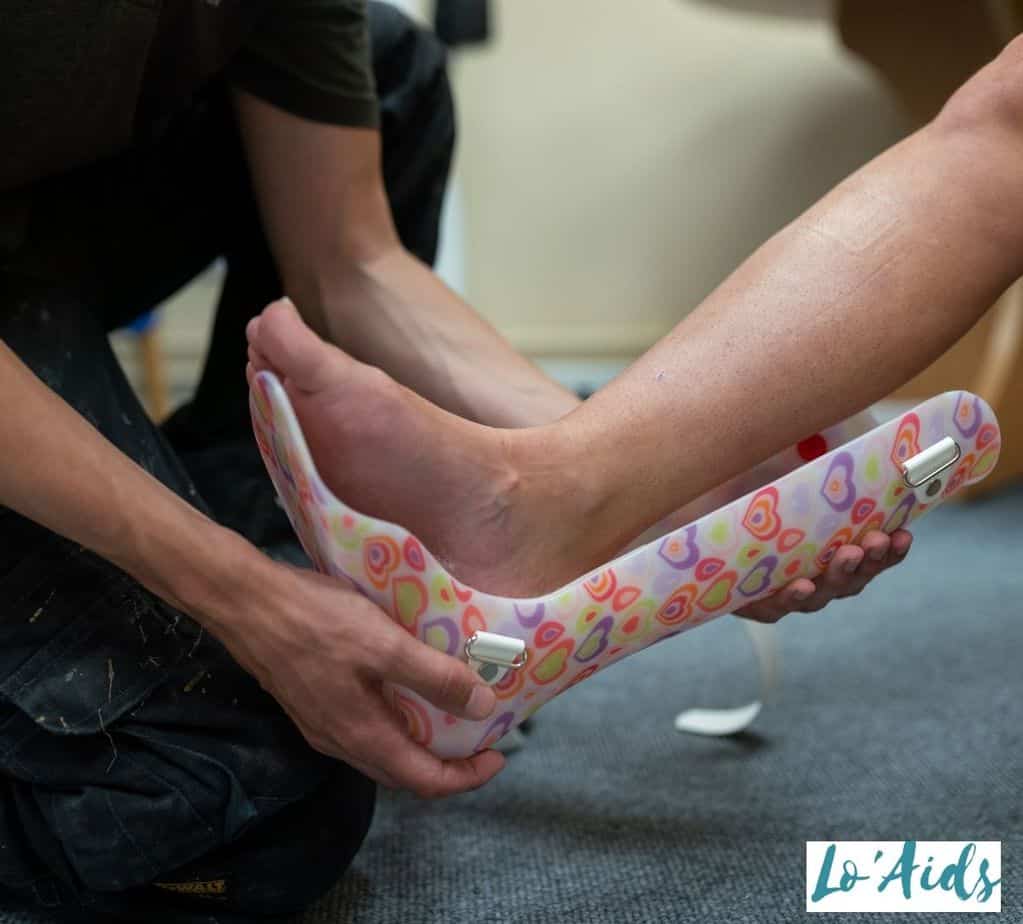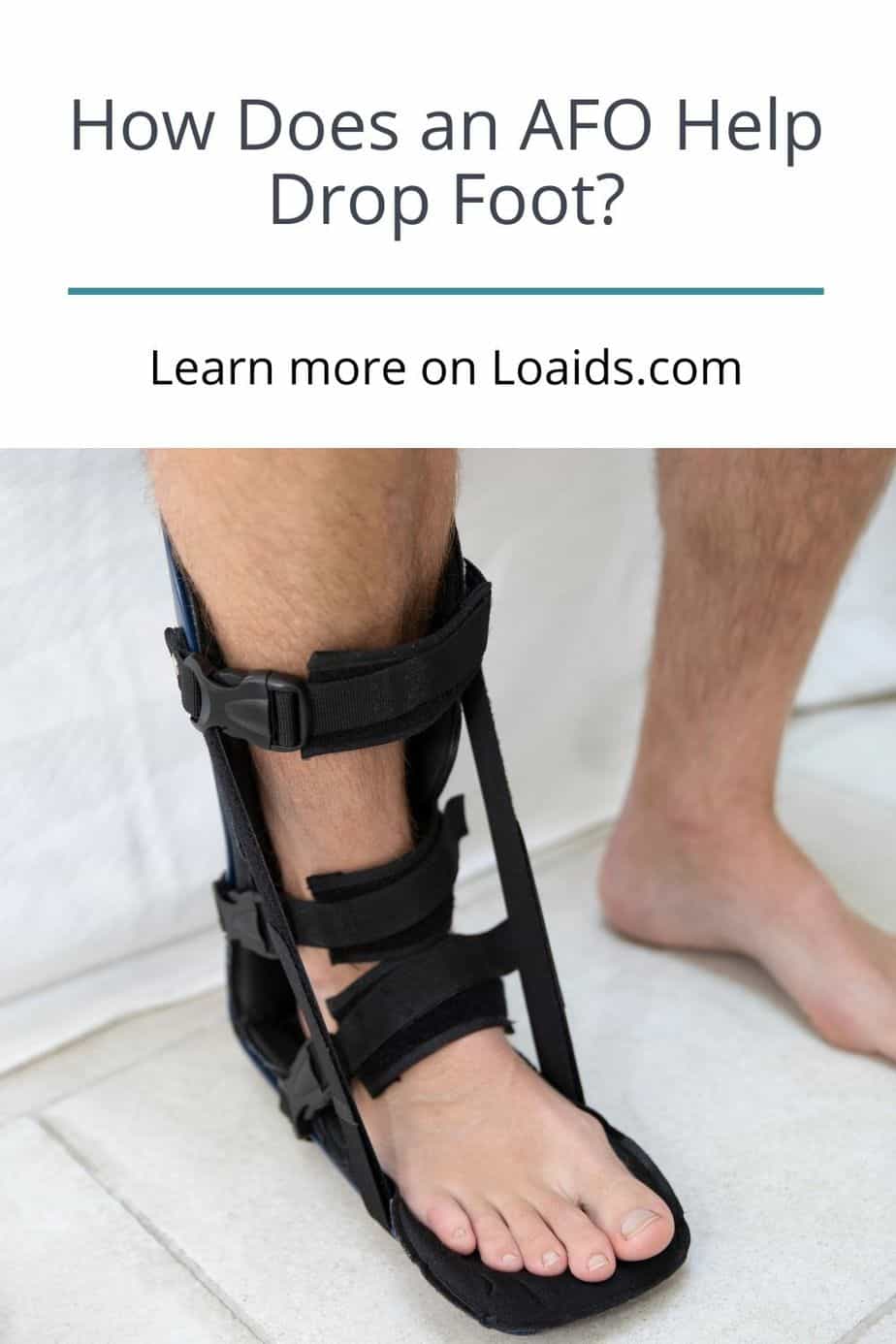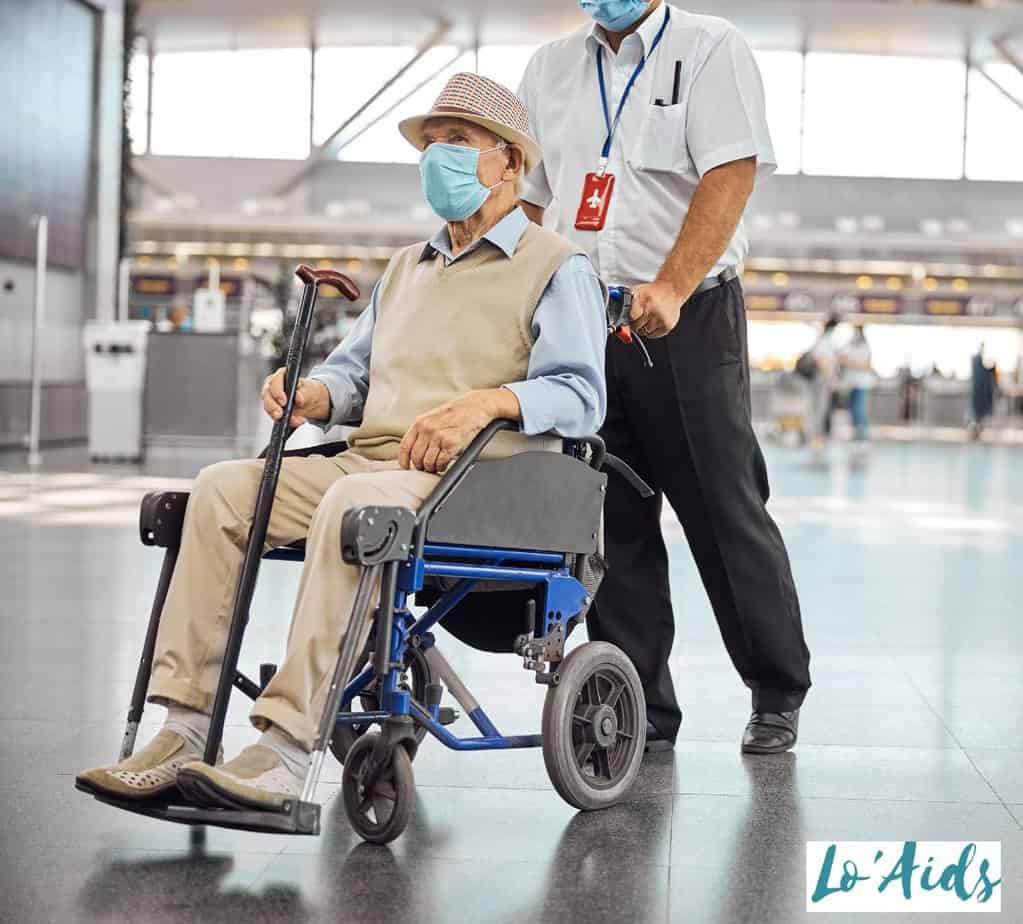How does an AFO help drop foot (AKA foot drop)?
It’s natural to wonder what AFO braces do and if they can improve your quality of life and help you in the recovery process.
So, let’s dive in to find the answers together.
Don’t forget to also check our review of the best AFO drop foot brace! Take a quick glance on this video.
Table of Contents
How Does an AFO Help Drop Foot?
An AFO stands for an ankle-foot orthosis, a type of ankle brace used to correct lower limb instabilities by keeping the feet stable and secure.
To understand how an AFO helps drop foot patients, we have to explain how the ankle moves in individuals with foot drop.

How Does Drop Foot Affect Movement?
The key movements of the ankle are called dorsiflexion and plantar flexion. They ensure a normal range of motion and allow you to walk, run, and do other activities.
Dorsiflexion is when you raise your feet upward toward the shins. Plantar flexion is when the top of your feet point away, for example, when you’re standing on your tips.
Drop foot hinders your ability to lift the front portion of your foot (dorsiflexion), while the plantarflexion remains intact.
As a result, you drag your toes involuntary when you walk, scraping the ground. It makes even the simplest everyday tasks difficult because you can’t move as fast and secure as before.
To compensate for this disability, some people develop a high-stepping gait pattern.
They lift their thighs and knees high in an attempt to clear the toes during the swing phase of the gait cycle.
You can watch this video to see what’s we’re talking about.
That’s not good for a person’s overall health. You can damage your joints or develop a spinal misalignment if you repeatedly slap your heel hard on the ground.
Moreover, since you can’t move your toes normally and clear the ground, you’re at risk of falling or tripping over obstacles. Climbing up/down the stairs also gets tricky, even with a walking cane.
And that’s why you may need an assistive device like an AFO to help you move around without fearing an injury.
But how does an AFO help drop foot? Let’s see.
What Does a Foot Drop Brace Do?
AFOs look like lightweight plastic “boots” with stripes/laces that you wear on the affected leg. Depending on the type of AFO, it may be solid, hinged, or adjustable, among a few.
These braces are light in weight and can be made from different materials to suit your range of motion and give you the necessary stability.
But how does an AFO help drop foot?
The purpose of an ankle brace for foot drop is to ensure a normal gait and movement by providing proper dorsiflexion motion during the swing cycle.
Think about the AFO brace as a necessary external brace that keeps your leg at a 90-degree angle to prevent toe dragging and foot slap.
It makes walking easier and reduces the amount of energy you spend trying to perform your daily activities.
An ankle-foot orthotic also provides medial and lateral stability, supports the weakened dorsiflexor muscles, and corrects deformities.
But a drop foot brace isn’t a cure. It reduces the risk of further injuries and keeps your ankle in a normal position but won’t fix the underlying condition.
Let’s find out why.
What Causes Drop Foot?
A drop foot is a symptom of an underlying condition rather than a disease by itself. It results from a dorsiflexor muscle weakness, nerve damage, or nerve paralyzes.
Peroneal nerve injuries, muscular dystrophy, spinal cord injury, stroke, cerebral palsy, and multiple sclerosis are the most common cause.
But crossing your legs, kneeling for prolonged periods of time, and wearing a cast also put you at risk of pinched nerves.
If you treat the underlying disease successfully, your drop foot gait should return to normal. That’s why you should work with your doctor to determine the appropriate foot drop treatments.
Unfortunately, depending on the causes, the condition can be permanent or temporal and can affect one limb or both.
In general, compressed nerves can heal for about three months if there are no further complications.
However, inherited muscular dystrophy and brain/spinal cord injuries can be permanent.
Check this video for more info:
Who Should Use AFOs for Foot Drop?
We’re going to talk in general about who you should use an AFOs.
If you experience muscle weakness or have problems lifting your toes, you should talk to your doctor as soon as possible to determine the cause.
Don’t start wearing an orthosis because you think you need one to ease your movement or keep your ankle stable.
You can do your joints and tissues more harm than good with the wrong AFO brace. More about that in a bit.
When Do You Need AFOs?
In general, an orthotic device is the first treatment doctors use to correct abnormal gaits, ensure normal movement, and reduce the risk of further injuries.
It’s suitable for people with compressed nerves, spinal cord injuries, brain disorders, inherited muscular dystrophy, and stroke survivors.

Patients with adult-acquired flatfoot, spraints, and fractures can also benefit from an AFO since it keeps the ankle stable and in proper alignment.
Surgeries can also lead to peroneal nerve entrapment. As a result, you may have to wear an ankle orthosis during your recovery phase to avoid further nerve injury.
Since there are so many AFO brace uses, your orthopedist is the one to judge who should wear one. And an AFO might not be enough to fix your problem.
Physical therapy is needed to strengthen your leg muscles, prevent heel stiffness, and extend your range of motion. Foot drop exercise can really make a difference.
If your symptoms don’t get better with an AFO, you may need to explore other options, such as surgery or an electrical stimulation device.
Keep in mind that the sooner you start wearing an AFO and treating the underlying cause, the better your chances of recovery are.
Who Shouldn’t Use AFOs?
As specialists explain, AFOs are useful only when “the foot can achieve plantigrade position when the patient is standing.”
In other words, you can use an AFO brace successfully if your toes are flat on the ground when you’re standing.
Always consult with your doctor before you get a pre-fabricated AFO brace to treat your symptoms. Not all braces will do because they don’t offer the same level of support.
What Are the Risks of AFOs?
AFOs are safe when used as prescribed by your orthopedist. A well-fitted AFO brace provides the necessary dorsiflexion and resistance to ensure proper ankle movement.
However, you should know how to put your AFO brace the right way. If your heel isn’t in the correct position, the brace won’t work effectively, and you can injure yourself when walking.
Moreover, if the brace isn’t adjusted to fit your leg well, it may cause significant pain and discomfort to the surrounding tissues.
Some specialists also warn that wearing AFO for a prolonged period of time can weaken the muscles and joints.
A study also says, “AFO use immediately reduced muscle activity of the ankle.” However, the reduction in activity is insignificant and doesn’t accumulate over time.
As such, AFOs are safe to use in most patients with paresis. However, it’s normal to experience some discomfort, redness, and pain during the first few weeks.
If you have any concerns about the use of your AFO brace, don’t hesitate to call your orthopedist. It’s not uncommon to need additional adjustments for maximum comfort.
FAQs
What Is Foot Drop?
Foot drop is the inability to lift the front part of the foot, causing the toes to drag on the ground while walking. It’s the result of an underlying condition, such as peroneal nerve damage, brain/spinal cord problems, muscular dystrophy, and some inherited conditions.
How Long Should You Wear a Foot Drop Brace?
How long do you need to wear an AFO brace depends on the underlying condition causing the toe dragging and dorsiflexor muscle weakness. Some nerve injuries and paralysis can resolve in a couple of months, but others are permanent because the damage is too severe.
What Is the Best Brace for Foot Drop?
The best brace for foot drop should be comfortable, discrete, and durable enough to last you a couple of years. The best ankle braces also fit most shoes and are easy to put on.
Does Walking Help Drop Foot?
Since drop foot results from nerve injuries and disorders, it won’t get much better by walking around without a brace. You need physical therapy and exercise to strengthen your leg muscles and improve your ability to walk.
What Shoes Are Best for Drop Foot?
You don’t need special shoes, but you should pick ones that hold your ankle stable and fit the ankle brace well. In general, trainers, high-top tennis shoes, and Doc Martins are excellent choices. But you might have to get a size bigger to accommodate the AFO brace.
Conclusion
An AFO brace provides the necessary dorsiflexion during the swing phase of your gait to keep your toes from dragging over the ground.
As such, AFOs can help you return to your daily life activities without worrying about tripping over furniture and obstacles.
But AFOs aren’t the only option for treating foot drop, and you should consult your orthopedist which one is the best for you.
References:
- “Controlling Drop Foot: Beyond Standard AFOs | Lower Extremity Review Magazine.” 2009. Lower Extremity Review Magazine | Rehabilitation • Trauma • Diabetes • Biomechanics • Sports Medicine. October 30, 2009. https://lermagazine.com/article/controlling-drop-foot-beyond-standard-afos.
- Cronkleton, Emily. 2017. “Dorsiflexion.” Healthline. Healthline Media. July 14, 2017. https://www.healthline.com/health/fitness-exercise/dorsiflexion.
- Johanna F.M. Geboers, Maarten R Drost, Frank Spaans, and Henk A M Seelen. 2002. “Immediate and Long-Term Effects of Ankle-Foot Orthosis on Muscle Activity during Walking: A Randomized…” ResearchGate. WB Saunders. March 2002. https://www.researchgate.net/publication/11527757_Immediate_and_long-term_effects_of_ankle-foot_orthosis_on_muscle_activity_during_walking_A_randomized_study_of_patients_with_unilateral_foot_drop.
- NHS Choices. 2021. “Foot Drop.” 2021. https://www.nhs.uk/conditions/foot-drop/.
- Watson, Stephanie. 2017. “What Is Plantar Flexion and Why Is It Important?” Healthline. Healthline Media. September 27, 2017. https://www.healthline.com/health/plantar-flexion.
- “When Is an Ankle-Foot Orthosis (AFO) Indicated in the Treatment of Foot Drop?” 2020. Medscape.com. March 23, 2020. https://www.medscape.com/answers/1234607-31166/when-is-an-ankle-foot-orthosis-afo-indicated-in-the-treatment-of-foot-drop.

What do you think about this topic? Are AFOs helpful for foot drop, according to you? Share your experience in the comment section!





I didn’t know about this. I can see how it would help out though!
It is amazing the products that are out there to help with foot problems. This is always a good thing to know about.
It certainly seems like AFOs can be very helpful if used correctly. I’m so glad that medical technology keeps improving!
This is such an interesting post! I didn’t know about any of this but it’s always amazing how medical technology gets better and better!
AFO braces can do so much in improving the quality of our life and speeding up our recovery.
AFO braces are definitely a big help. Im amazed how they work and help us in many ways
This is a really informative post about AFO, appreciate that you have covered it in detail.
It is good to use this brace to help with foot drop and not get injured. Chronic foot issues can really impact our lives.
This post is really informative, thanks for sharing this information.
My mother-in-law has a drop foot and she needs to know all these details. Thanks for sharing!
I honestly had no idea about this. Thank you for sharing all these helpful information!